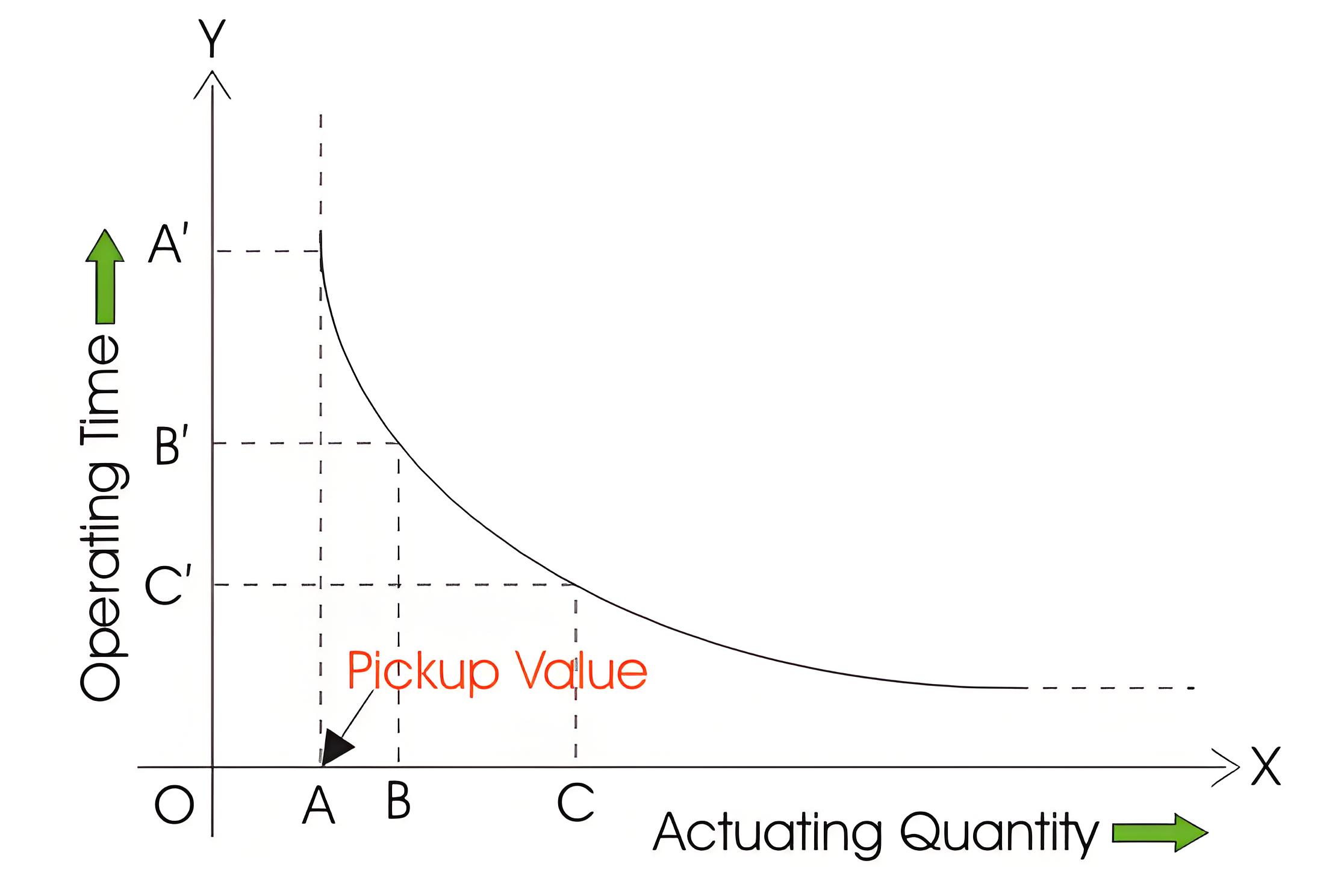What is Inverse Time Relay?
What is Inverse Time Relay?
Inverse Time Relay Definition
An inverse time relay is defined as a relay where the operation time decreases as the actuating quantity increases.
Operating Time Relationship
The relay’s operating time is inversely proportional to the magnitude of the actuating quantity, meaning higher quantities result in faster relay operation.
Mechanical Accessories
Inverse time relays use mechanical accessories, such as a permanent magnet in an induction disc relay or an oil dash-pot in a solenoid relay, to achieve inverse time delay.
Characteristics Of An Inverse Time Relay

Here, in the graph it is clear that, when, actuating quantity is OA, the operating time of the relay is OA’, when actuating quantity is OB, the relay operating time is OB’ and when actuating quantity is OC, the relay operating quantity is OC’.
The graph also shows that if the actuating quantity is less than OA, the relay’s operating time becomes infinite, meaning the relay does not actuate. The minimum value of actuating quantity needed to start the relay is called the pick-up value, denoted as OA.
The graph indicates that as the actuating quantity approaches infinity, the operating time does not reach zero but instead approaches a constant value. This is the minimum time required to operate the relay.
During relay coordination in electrical power system protection scheme, there is some time intentionally required, to operate some specific relays after some specific time delays. Definite time lag relays are those which operate after a specific time.
The time lag between instant when the actuating current crosses the pickup level and the instant when relay contacts finally closed, is constant. This delay does not depend up on magnitude of actuating quantity. For all actuating quantity, above pick up values, the relay operating time is constant.
The Electricity Encyclopedia is dedicated to accelerating the dissemination and application of electricity knowledge and adding impetus to the development and innovation of the electricity industry.













